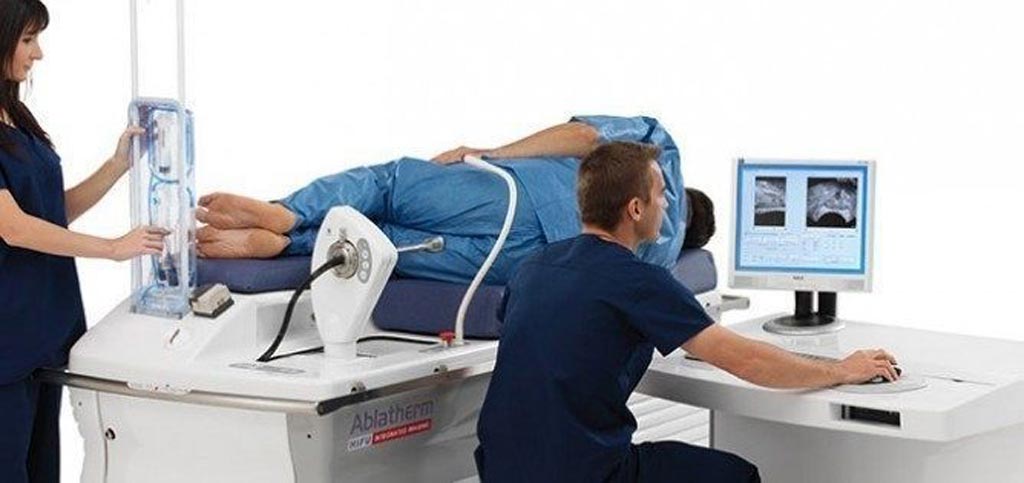Ultrasound as Effective as Surgery for Prostate Cancer
By MedImaging International staff writers
Posted on 19 Jul 2018
A new study suggests that high-intensity focused ultrasound (HIFU) can destroy prostate cancer (PC) tumors as efficiently as surgery or radiotherapy (RT), but with fewer side effects.Posted on 19 Jul 2018
Researchers at Imperial College London (Imperial; United Kingdom), University College London (UCL, United Kingdom), and other institutions conducted a prospective study of 625 consecutive patients with non-metastatic, clinically significant PC who underwent focal HIFU between January 1, 2006 and December 31, 2015. Disease was first localized using multiparametric magnetic resonance imaging (mpMRI), combined with targeted systematic biopsies, or transperineal mapping biopsies.

Image: A new study suggests that HIFU can effectively ablate prostate cancer tumors (Photo courtesy of Ablatherm).
Areas of significant disease were treated, with follow-up including prostate-specific antigen (PSA) measurement, mpMRI, and biopsy. The primary endpoint, failure-free survival (FFS), was defined as freedom from radical or systemic therapy, metastases, and cancer-specific mortality after five years. During median follow-up of 56 months, high-risk PC was found in 505 patients (84%). FFS was 99% at one year, 92% at 3 years, and 88% at 5 years. For the whole patient cohort, metastasis-free, cancer-specific, and overall survival at five years was 98%, 100%, and 99% respectively.
The results confirmed that cancer survival rate from HIFU was 100%, identical to that of surgery and RT. The study showed, however, that the risk of side effects when HIFU was used was lower than the risk incurred by the other treatment options. Urinary incontinence affected two percent of patients, but none required more than one pad per day. Erectile dysfunction affected 15% of the study population. The study was published on June 27, 2018, in European Urology.
“Although prostate cancer survival rates are now very good, the side effects of surgery or radiotherapy can be life-changing. Some patients are left requiring multiple incontinence pads every day, or with severe erectile dysfunction,” said lead author Professor Hashim Ahmed, PhD, of Imperial. “We need to now focus on improving the quality of life for these men following treatment. This latest trial of focal HIFU suggests we may be able to tackle the cancer with fewer side effects.”
HIFU technology is based on nonlinear acoustic mathematical optimization methods to analyze and simulate the propagation of sound in material. The information is then used to enhance the shape of an acoustic lens so that that ultrasound pressure is focused precisely on the location of the tissue to be ablated, while the surrounding tissue retains as little damage as possible.
Related Links:
Imperial College London
University College London













